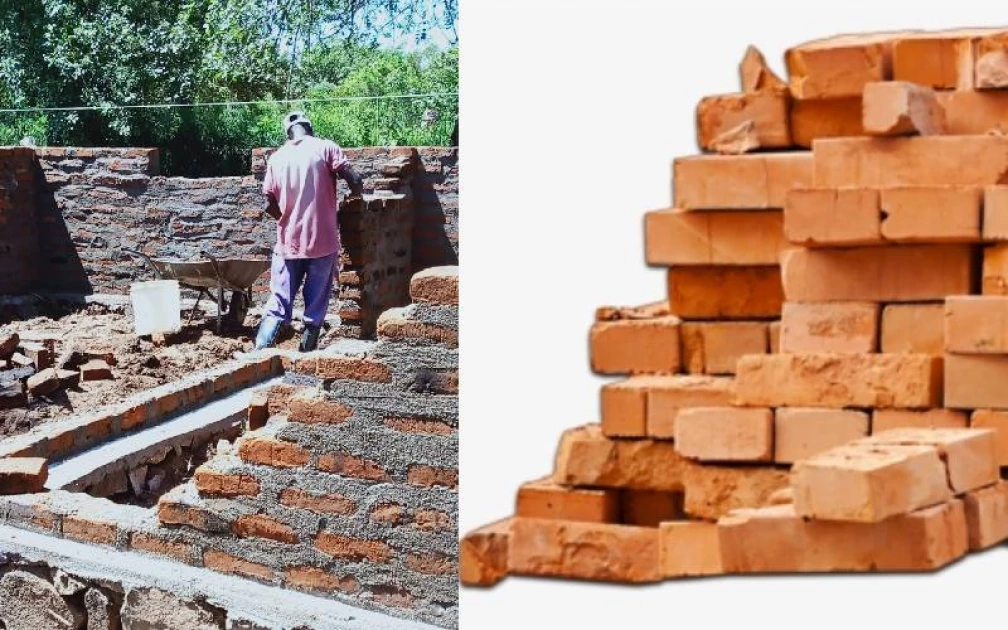Rush to build red brick houses turning villages into desert

Many residents in the countryside prefer building houses using traditionally made red bricks. [Photo/Courtesy]
Brickmaking is fast becoming a way of life in Western parts of Kenya – as residents race to find alternative means of economic survival.
The last five years have seen a rush for red bricks – popularly known as ‘matofali’ – as prefered building material in the countryside.
Many residents are intentionally shifting from the traditional grass-thatched mud houses for modern houses.
The red bricks are made from clay soil which is molded and 'baked' inside a traditional kiln under very high temperatures.
These traditional kilns are fueled using firewood, which unfortunately has to come from trees. This has seen wanton destruction of trees in these areas.
“Many people are cutting down trees to sell to these brick makers, result of which is destruction of vegetation and forest cover,” said Simon Ondigo from Rongo.
According to Ondigo, red brick making is a booming business especially now that prices of cement have hit the roof.
“In the past people would make bricks from cement and sand, but now many prefer red bricks because they are relatively cheaper compared to other modern materials,” said Ondigo.
Unfortunately, this race towards red bricks is hurting the environment.
“There is a lot of bare land in Western and Eastern parts of Kenya because people have cut down trees to fuel this booming red brick business,” says Ondigo.
Red bricks are common in Kisii, Rongo and other Western regions – with one brick selling for between Sh8 and Sh10.
“The prices actually differ depending on a number of factors like quality of bricks and availability of the bricks,” says Ondigo who has been making bricks for over 10 years.
He says he is worried for the environment because some people are willing to sell trees to brick makers that are yet to mature just because they need the money.
“It is only a matter of time before the vegetation cover is completely destroyed. This is why we need the county government to regulate brick making,” he says – adding that many are taking to traditional brick making as an economic activity.
“The government should empower people to enable them manufacture industrial red bricks without having to use wood fuel,” says Ondigo.
According to a 2022 report by the National Environmental Management Authority (NEMA), Kenya has a forest cover of 7.4%, 3.6% short of the constitutionally accepted 10% forest cover. The decreasing forest cover is aggravated by an abated environmental destruction of trees for charcoal burning.
Want to send us a story? SMS to 25170 or WhatsApp 0743570000 or Submit on Citizen Digital or email wananchi@royalmedia.co.ke
Comments
No comments yet.


Leave a Comment